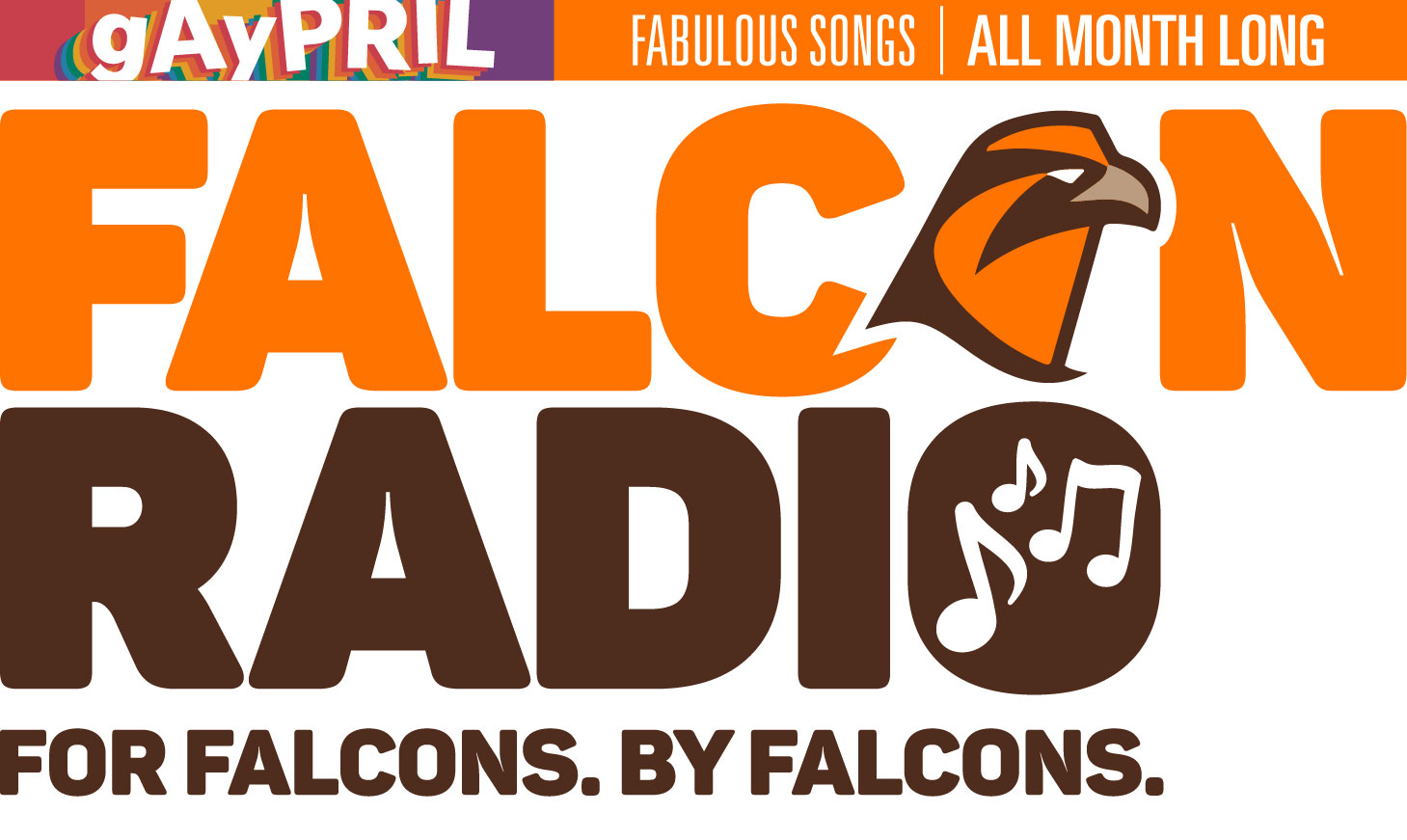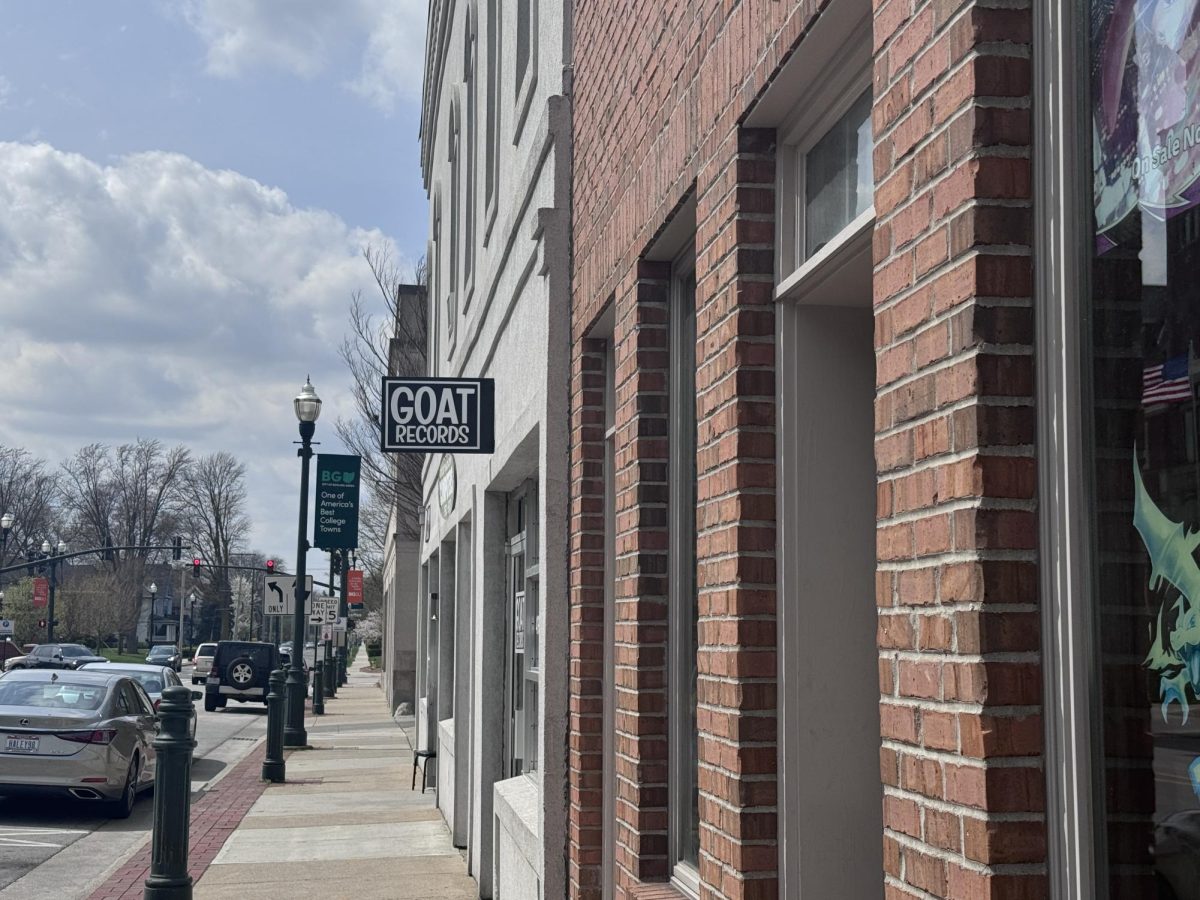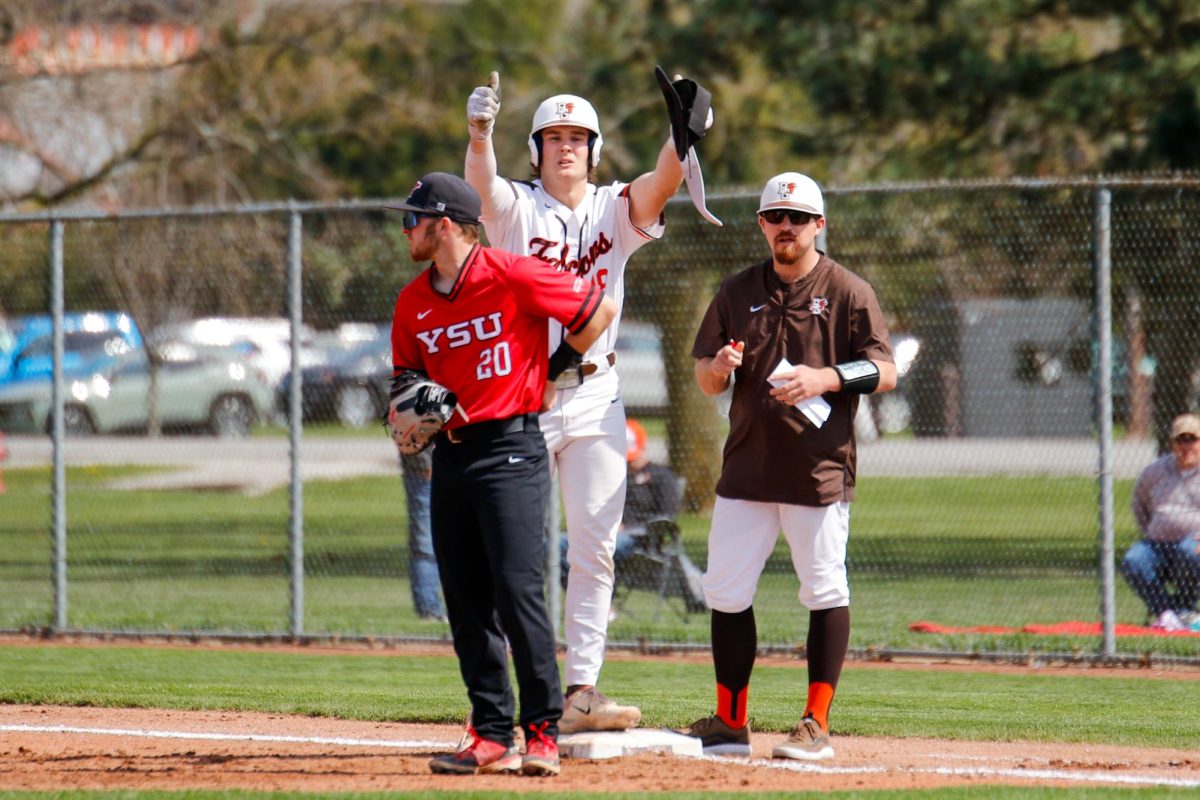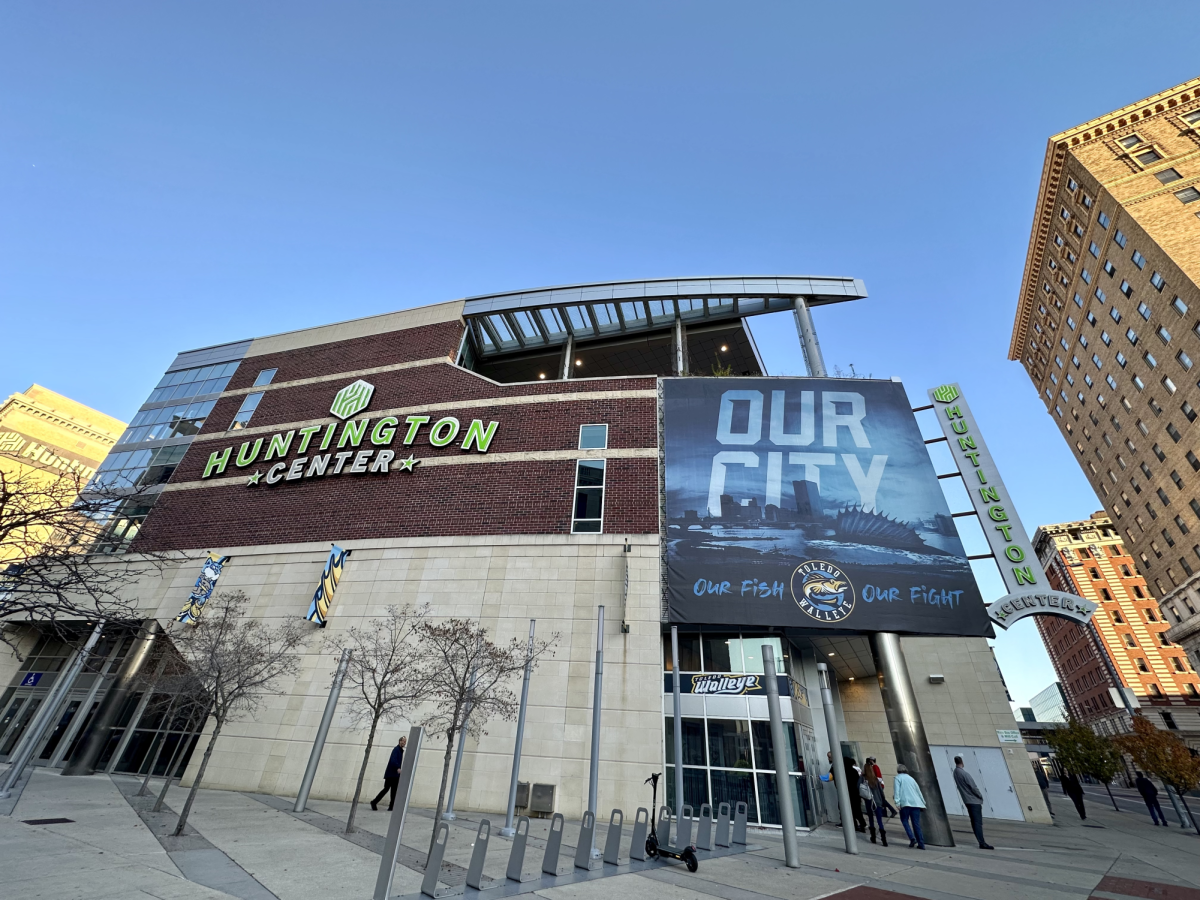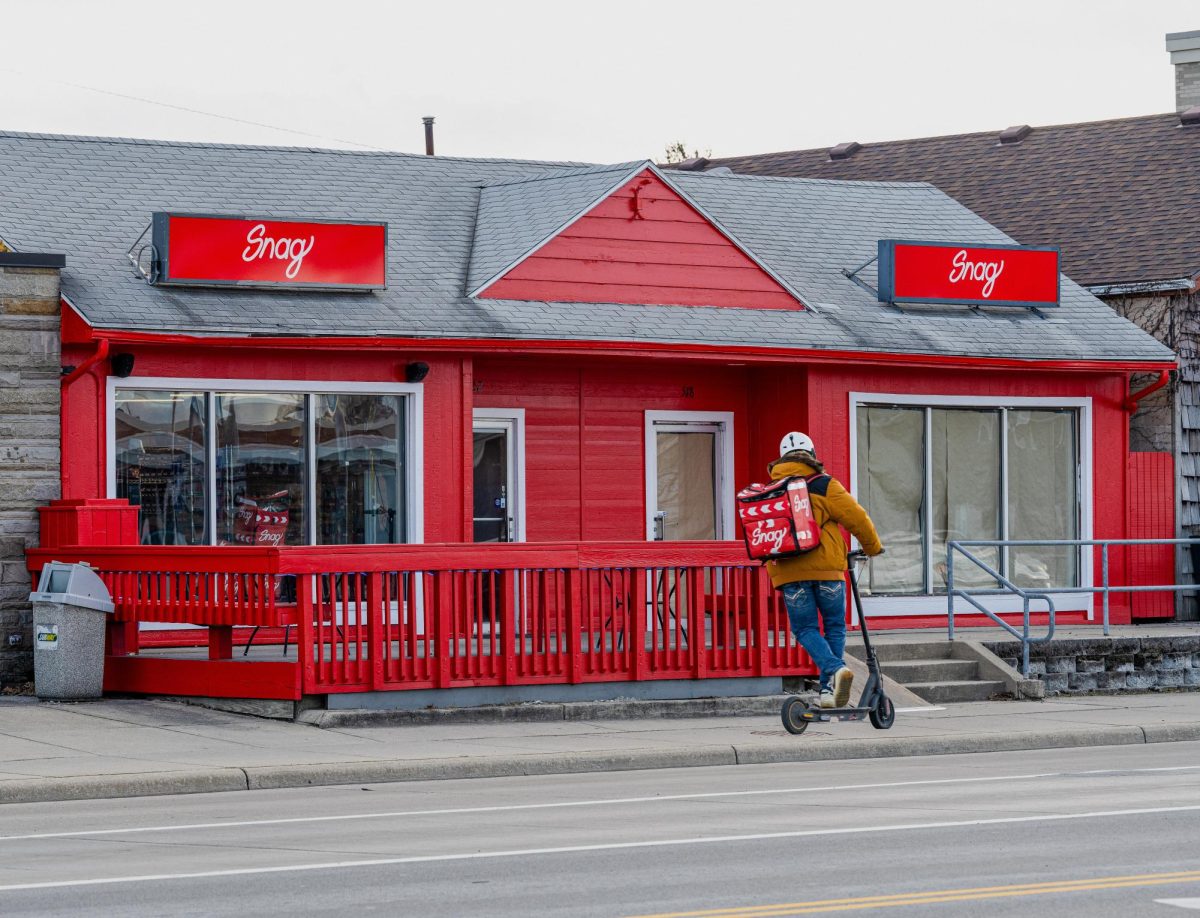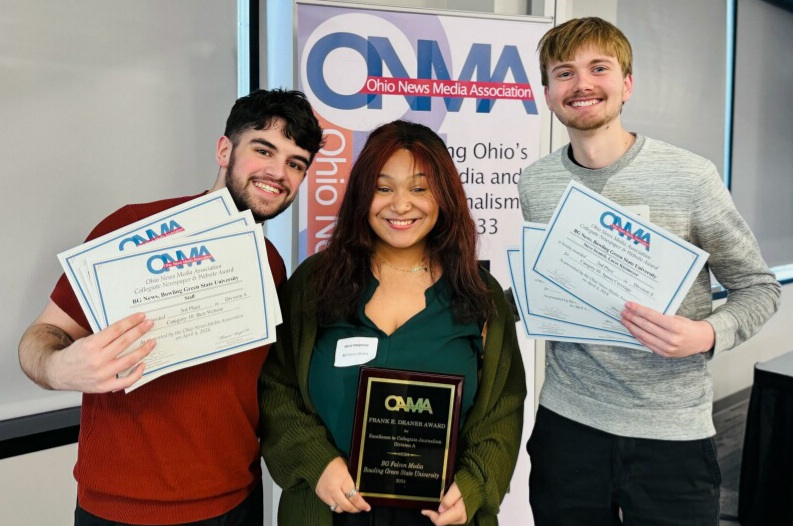The morning of June 1, 1975 dawned hot and humid in Bowling Green. It was a sunny morning as traffic began to back up on Interstate 75 and crowds of people flocked to the Doyt L. Perry Stadium.
The Poe Ditch Music Festival, a culmination of 18 months of work by the student group Cultural Boost to bring together the largest music festival the University had ever seen, was about to begin.
Kim Jakeway, then president of Cultural Boost and now a retired school principal, remembers seeing the traffic on the highway from the top of the stadium.
“I can remember looking out from the stadium … and I could see nothing but miles and miles and miles of stopped vehicles on I-75,” he said
The highway was so packed with traffic that when the bands performing at PDMF tried to make it to Bowling Green from the Toledo airport, they had to be flown in by helicopter, Jakeway said.
The stadium opened the gates at 9:30 a.m. and the crowd began entering. With more than 10,000 people having camped out the night before, on every open green space imaginable near the stadium, Jakeway said it was a “flood” of people that surged through the open gates.
When it was all over, final estimates ranged from 40,000 to 44,000 for the total number of attendees that assembled in tiny so-called “Boring Green” for its first, and possibly last, major outdoor concert.
As the crowd filled the stadium in the hours before the 11:30 a.m. start time, no one had a hint of how the day might end.
“I was very happy with the set-up,” Jakeway said. “I was very happy with the way things progressed and I felt very confident that the show itself would go without a hitch.”
Jakeway, and everyone else in Bowling Green, would eventually see their hopes for the day dashed.
For those who attended the Poe Ditch Music Festival, some of the most prevalent memories are not of the music, but the massive crowd and the widespread drug use at the festival.
Ken Schoeni, who handled the maintenance of the Doyt at the time, vividly recalls the number of attendees who were affected by drugs and alcohol.
“They were all juiced up, my God Almighty,” Schoeni said. “And they were on drugs more than they were alcohol.”
In an article published in the July 3, 1975, edition of The BG News, the acting director of drug and crisis intervention group Karma, Dr. Marvin Kumler, estimated between 300 and 350 people were treated at the first aid station.
The article states of those treated, “half of them [were] for drug-related illnesses. Other afflictions were sunburns, cut feet, headaches and one broken ankle, Dr. Kumler said.”
Dan Feicht, who photographed the event for The BG News, remembers the wide use of a variety of hard drugs, specifically because it was out of character for Bowling Green.
“You didn’t see that sort of thing at Bowling Green. I mean, there was a lot of pot, but that was it,” Feicht said.
He added that the attendees of the concert were “overwhelmingly outsiders.”
Jakeway said only 3,000 to 4,000 tickets were sold to students before the concert, but many students probably decided to attend the day of, making it difficult to have an accurate count on how much of the crowd consisted of University students. Jakeway did estimate that the actual number of student attendees could be as much as double the presale numbers.
As for the crowd, Feicht said, “It was solid people all the way past the north end zone.”
“It was nothing that we had ever seen before in our little town. I mean, it was a mob,” he said.
The first indication that there might be real trouble at the festival, as Jakeway remembers it, was the failure of the contracted security company to deliver the promised amount of personnel the night before.
“Things started going south when the security company decided they weren’t going to show,” Jakeway said.
Of the 150 security personnel hired from Eagle Detective Agency of Toledo, “only about a handful of them showed up” the night before the festival, Jakeway said.
With the festival looming the next day, Jakeway enlisted the help of 30 of his fraternity brothers to help keep order and screen people at the front gates.
“Some of my fraternity brothers were serious and some of my fraternity brothers were there to see the show and kind of got caught up with what was going on,” Jakeway said, but added that they did the best they could. Aid could not be expected from the Bowling Green Police Department, which was focused outside the stadium.
Feicht describe the atmosphere of PDMF as “surreal,” as nothing of that scale had ever happened at the University before.
“It had kind of a Woodstock feel on a very small scale,” he said.
Concert attendee Deb Weiser, who was then entering her senior year at the University, said her overall impression of PDMF was of it being disorganized, citing long pauses between the acts as bands set up and the sound system being impossible to hear in certain parts of the stadium.
Jakeway said the bands who performed raved about the energy of the crowd, who he said were reveling in the music.
“You could tell [by] that vibe, that energy, that they were enjoying themselves,” he said.
A reviewer for The BG News, David Fandray, wrote in his June 3, 1975, review of the concert that each of the stylistically diverse acts performed well and appealed to their particular audience. Fandray had praise for Richie Havens, who he said, “as expected, created something of a Woodstock atmosphere in the stadium.”
Havens was followed by heavy-metal band Montrose, which Fandray described as “simple, hard-punching rock.” He said excitement was building for the headlining acts, Golden Earring and Johnny Winter.
Those who were at the concert agreed that it was fairly tame, and if nothing else happened, the concert would have been remembered merely for the crowd of people and the prevalence of drugs.
But the weather proved uncooperative. What had started as a sunny, hot, humid day by mid-afternoon turned into a cloudy day that promised rain.
Weiser remembers seeing the impending storm on the horizon.
“It was those big, deep thunderclouds that are really dark gray along the bottom,” she said. She describe the clouds as “the billowing white … prow of [a] ship coming toward you.”
Jakeway remembers catching a glimpse of the storm in the distance at about 5:30 p.m. The storm hit Toledo first, giving the organizers time to warn the concertgoers of the impending storm.
Jakeway said out of the roughly 40,000 attendees, 30,000 left and “10,000 of your probably more hardcore rock fans that stayed around … they just dug in.”
Through the promoter’s connections at Kansas City, Cultural Boost was able to borrow a tarp from the Kansas City Chiefs to protect the field, Jakeway said.
However, as the rain began to pour, concertgoers started cutting off pieces of it to shield themselves from the elements.
“[The tarp] almost disintegrated,” Jakeway said.
Though the downpour lasted less than 30 minutes, the wires to the sound system were quickly underwater. Fandray wrote that the crowd was told Johnny Winter would play if the stage could be declared safe. Ultimately, Golden Earring and Johnny Winter canceled, citing fears of electrocution.
At that point, the power to the sound system had been shut down because of the rain, Jakeway said.
“There was no way to turn it back on to say ‘Hey, we’re sorry,’” he said.
The remaining crowd was upset, to put it lightly. They had endured soaking rain, and when they realized the show would not go on, a cascade of empty bottles began hitting the stage.
In an opinion column in the June 4, 1975, edition of The BG News, a G.M. DeWood called the cancellations a “culmination of abuse” from PDMF.
DeWood wrote, “A concert billed as ‘rain or shine’ is called because of a one hour rain. Does that say something about the preparations and the fine equipment.”
The crowd escalated into more violence when the windows to the track press box were broken and, according to The BG News, a molotov cocktail was thrown in and the press box went up in flames.
Later that night, a Wooster Street bar, the Gigolo, was also set on fire, though the culprits were never caught.
Jakeway said he recalled sitting on the stage in the stadium, staring at the destruction in “unbelief.”
“I could not fathom that reaction,” he said.
By midnight, the fires were extinguished and most of the crowd had made its way out of Bowling Green. What remained was a mess, both physical and political, and the University administration had to quickly rise into action to clean it up.


